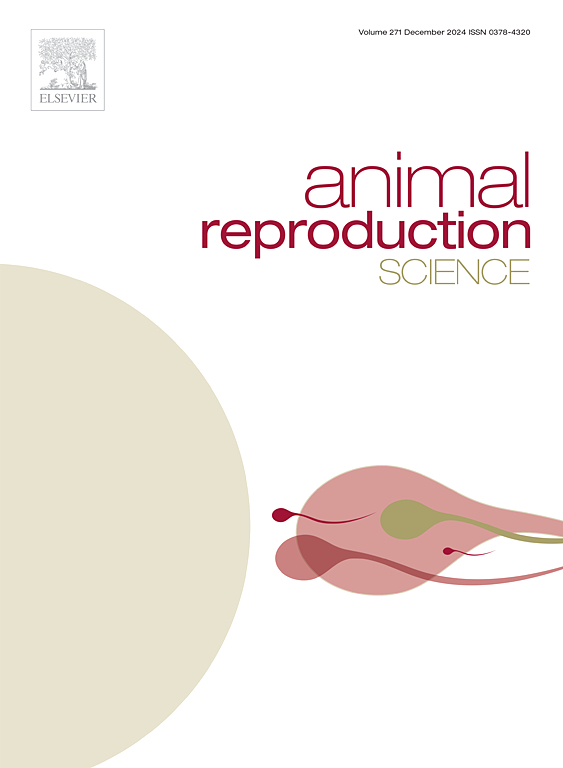Evaluating sperm characteristics from stripping and testicular extraction in northern pike (Esox lucius) with a focus on stability during storage
IF 2.2
2区 农林科学
Q1 AGRICULTURE, DAIRY & ANIMAL SCIENCE
引用次数: 0
Abstract
The quality and quantity of stripped and testicular wild northern pike (Esox lucius) sperm was compared and the effectiveness of short-term storage was assessed. Stripped sperm (SS) was collected using abdominal massage. Next, the fish were decapitated and the testes were removed. Testicular sperm (TS) was collected by gently macerating the testes through double-layered gauze. The volume and number of sperm were assessed in SS and TS. Computer-assisted sperm analysis (CASA) was used to determine SS and TS motility and kinetic parameters. Undiluted samples of SS and TS were then stored short-term under refrigeration (8°C) for 72 h. A higher volume and number of sperm were noted for TS compared to SS. On the other hand, motility and kinetic parameters of SS and TS were similar immediately after collection. Seminal plasma osmotic pressure was lower in SS compared to TS. Regardless of the sperm source (SS or TS), values of sperm motility and kinetic parameters remained high during short-term storage for 24 h. However, after 48 and 72 h significant decreases in the values of MOT, curvilinear velocity (VCL, μm s−1), straight-linear velocity (VSL, µm s−1), and amplitude of lateral head displacement (ALH, µm) parameters were noted in SS compared to TS. This indicated that northern pike sperm obtained from spermatic ducts lost their biological value (fertilization capacity) much faster than that obtained from testes. This was most likely due to the presence of urine and its long-term negative impact on storage efficiency of SS compared to TS.
求助全文
约1分钟内获得全文
求助全文
来源期刊

Animal Reproduction Science
农林科学-奶制品与动物科学
CiteScore
4.50
自引率
9.10%
发文量
136
审稿时长
54 days
期刊介绍:
Animal Reproduction Science publishes results from studies relating to reproduction and fertility in animals. This includes both fundamental research and applied studies, including management practices that increase our understanding of the biology and manipulation of reproduction. Manuscripts should go into depth in the mechanisms involved in the research reported, rather than a give a mere description of findings. The focus is on animals that are useful to humans including food- and fibre-producing; companion/recreational; captive; and endangered species including zoo animals, but excluding laboratory animals unless the results of the study provide new information that impacts the basic understanding of the biology or manipulation of reproduction.
The journal''s scope includes the study of reproductive physiology and endocrinology, reproductive cycles, natural and artificial control of reproduction, preservation and use of gametes and embryos, pregnancy and parturition, infertility and sterility, diagnostic and therapeutic techniques.
The Editorial Board of Animal Reproduction Science has decided not to publish papers in which there is an exclusive examination of the in vitro development of oocytes and embryos; however, there will be consideration of papers that include in vitro studies where the source of the oocytes and/or development of the embryos beyond the blastocyst stage is part of the experimental design.
 求助内容:
求助内容: 应助结果提醒方式:
应助结果提醒方式:


